Vietnamese style tea sets were recently introduced to domestic and foreign viewers at the exhibition “Oriental Tea Culture” held at the Museum of Vietnamese History (Ho Chi Minh City).
Tea has long been considered a medicine and a healthy drink for humans if used properly. Enjoying tea has become a cultural feature in Oriental countries. Vietnamese tea culture, which has been around for thousands of years, also has its own characteristics with special drinking habits and tea sets including pots, cups and spoons.
Among the exhibits, the area of Vietnamese tea sets had 122 objects on display presenting the most essential part of Vietnamese tea culture. They included different porcelain tea sets of the Ly Dynasty (the 11th-13th centuries) and the Tran Dynasty (the 13th-15th centuries), China made pottery and other objects from reputed ceramics production areas in Vietnam such as Bat Trang, Chu Dau, Sai Gon, Lai Thieu.
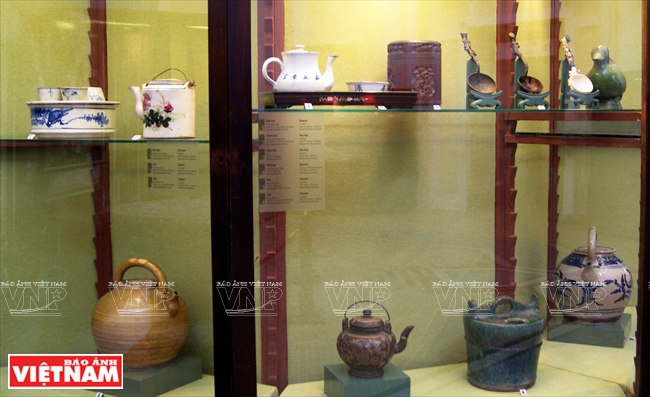
Objects of different styles from famous ceramic production areas in Vietnam
like Bat Trang, Chu Dau, Saigon and Lai Thieu.

Tureens, bowls and cups used in tea drinking during the Ly – Tran Dynasties (the 11th-14th centuries).
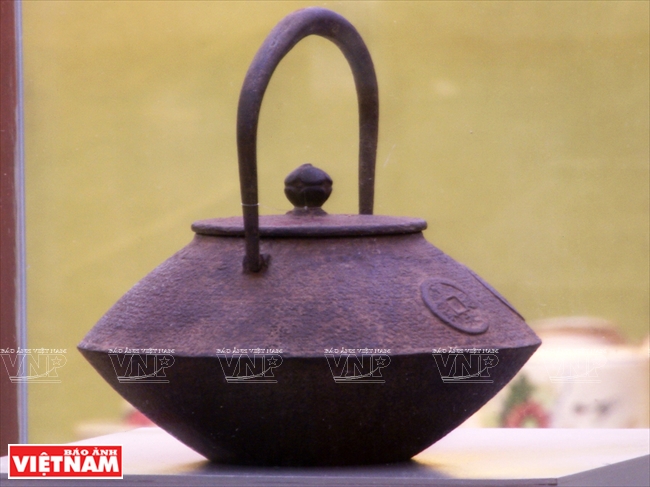
A Japanese tea pot.
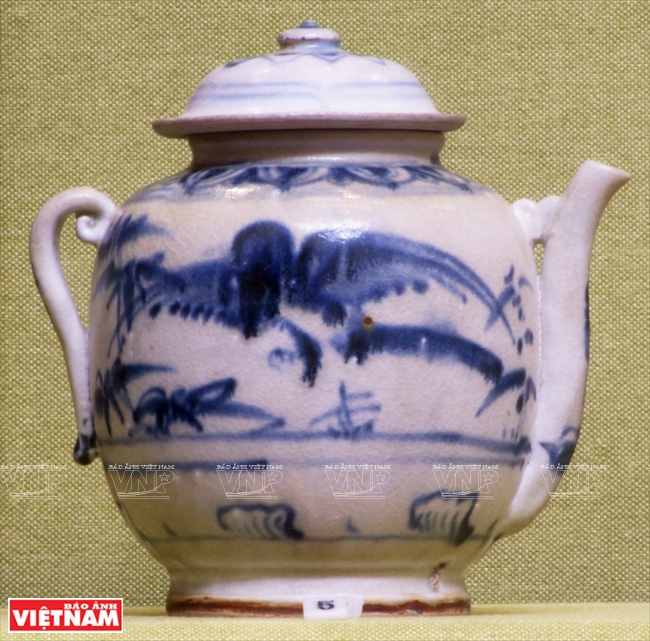
A blue and white enamelled tea pot produced in the 15th century.
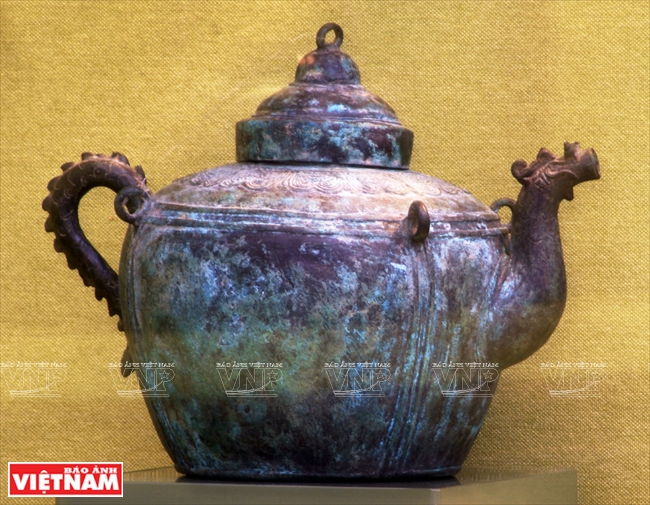
A metal tea pot produced in the 17th-18th centuries.
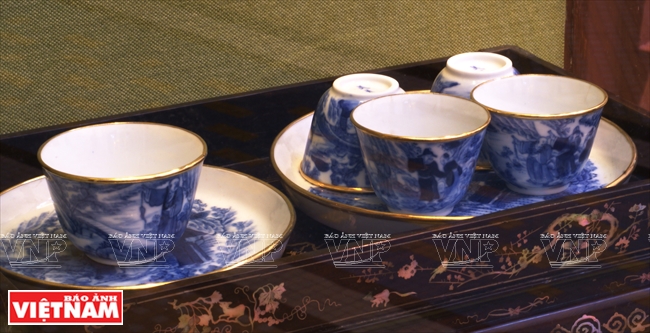
A set of Tong – Quan tea cups titled My Ngoc (fine jade)
made of blue and white porcelain in the 19th century.
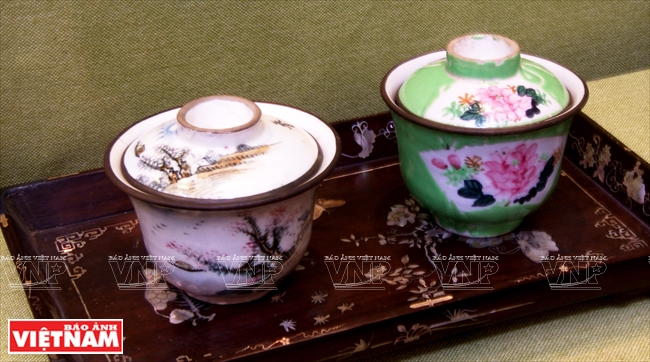
Lidded cups made of colourful enamelled pottery in the 19th century in Lai Thieu.

Lidded cups made of enamel coated copper in the 19th century titled “Minh Mang”
and Tong – Quan tea cups titled “Noi Phu”.
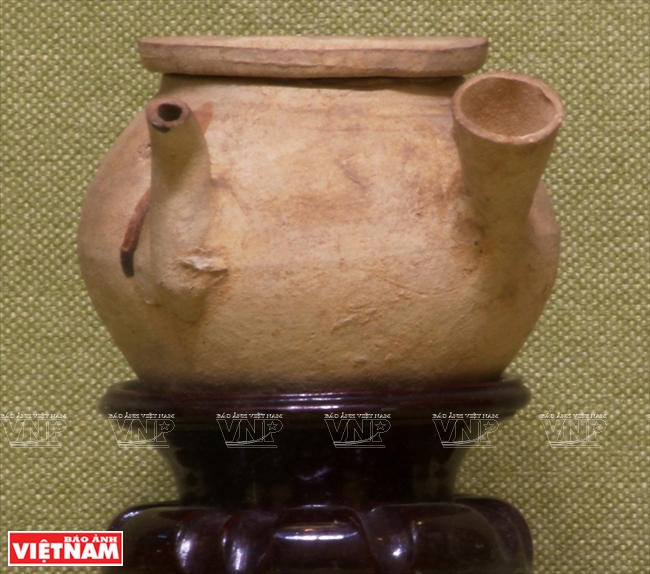
A terra cotta tea pot produced in the 19th century.
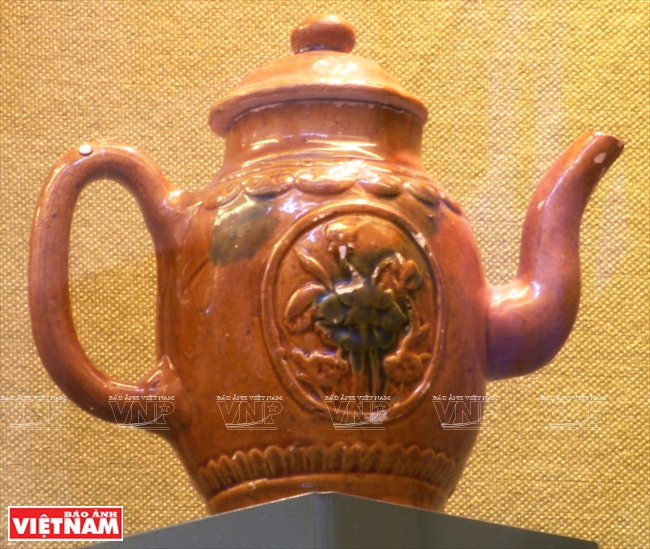
A colourful enamelled pot produced in the 19th century in Quang Duc.

A tea set made of blue and white enamelled pottery in the 19th century in China.
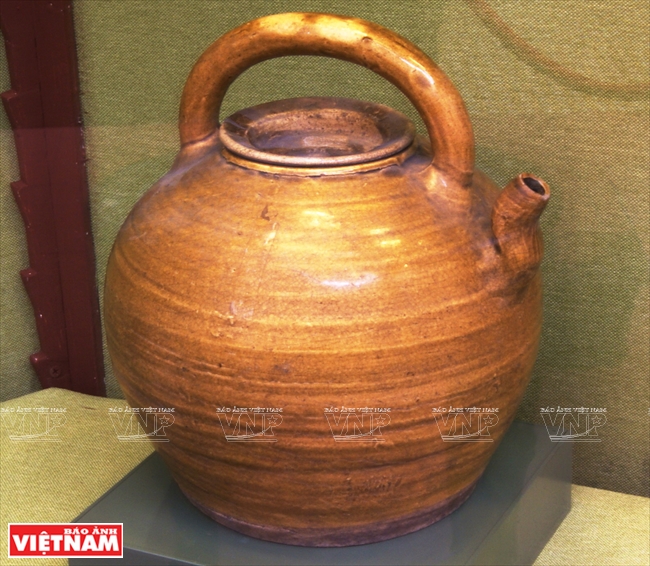
A colourful enamelled pot produced in early 20th century in Lai Thieu.
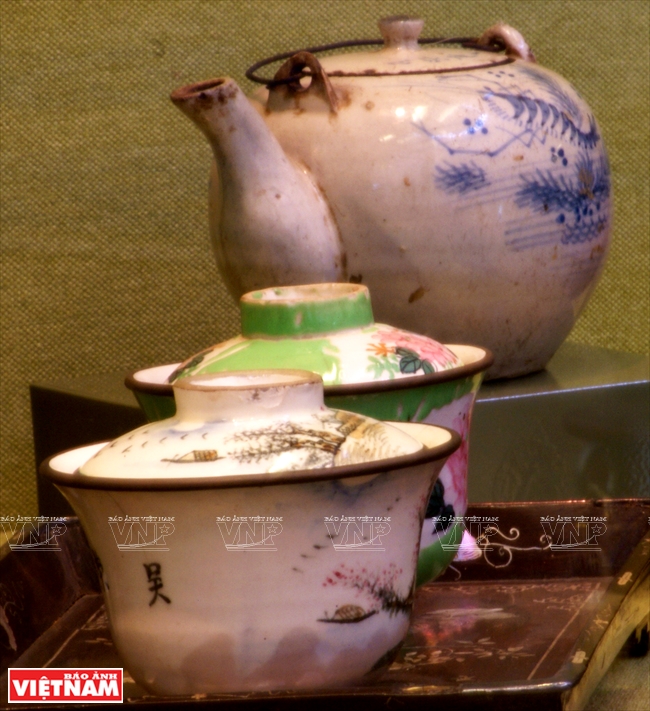
A colourful enamelled pottery tea set produced in early 20th century in Lai Thieu.

The exhibition showcases several unique tea sets. |
Private collectors also contributed their unique collections to the exhibition such as Nguyen Huu Triet’s porcelain tea set with blue and white enamel produced under the reign of King Tu Duc and Nguyen Thanh Tuyen’s cups with lids made of enamel coated copper produced under the reign of King Minh Mang, among others. The organisational board also displayed modern-style tea sets with traditional patterns.
Vietnamese tea culture was also reflected in objects of Japan’s Annam Yaki pottery tea sets. They were complete tea sets with blue patterns produced in the Chu Dau ceramic workshops in Dang Ngoai (Outer Region) during the Le – Mac Dynasties (the 16th-17th centuries) and exported to Japan. These objects are the proof of the Vietnam-Japan exchange, in which Vietnamese tea sets became part of the refined and elegant culture of preparing and enjoying tea of the Japanese with the principle of Hoa (Harmony), Kinh (Respect), Thanh (Purity) and Tich (Silence).
At the exhibition, the public also had an opportunity to discover Vietnamese tea culture through a performance of tea making and enjoying art. Julian Green, an American visitor, said that he was happy to learn about Vietnamese tea culture when visiting the country. He regarded it as an intriguing cultural feature of the Vietnamese that fascinates tourists.
By Nguyen Vu Thanh Dat